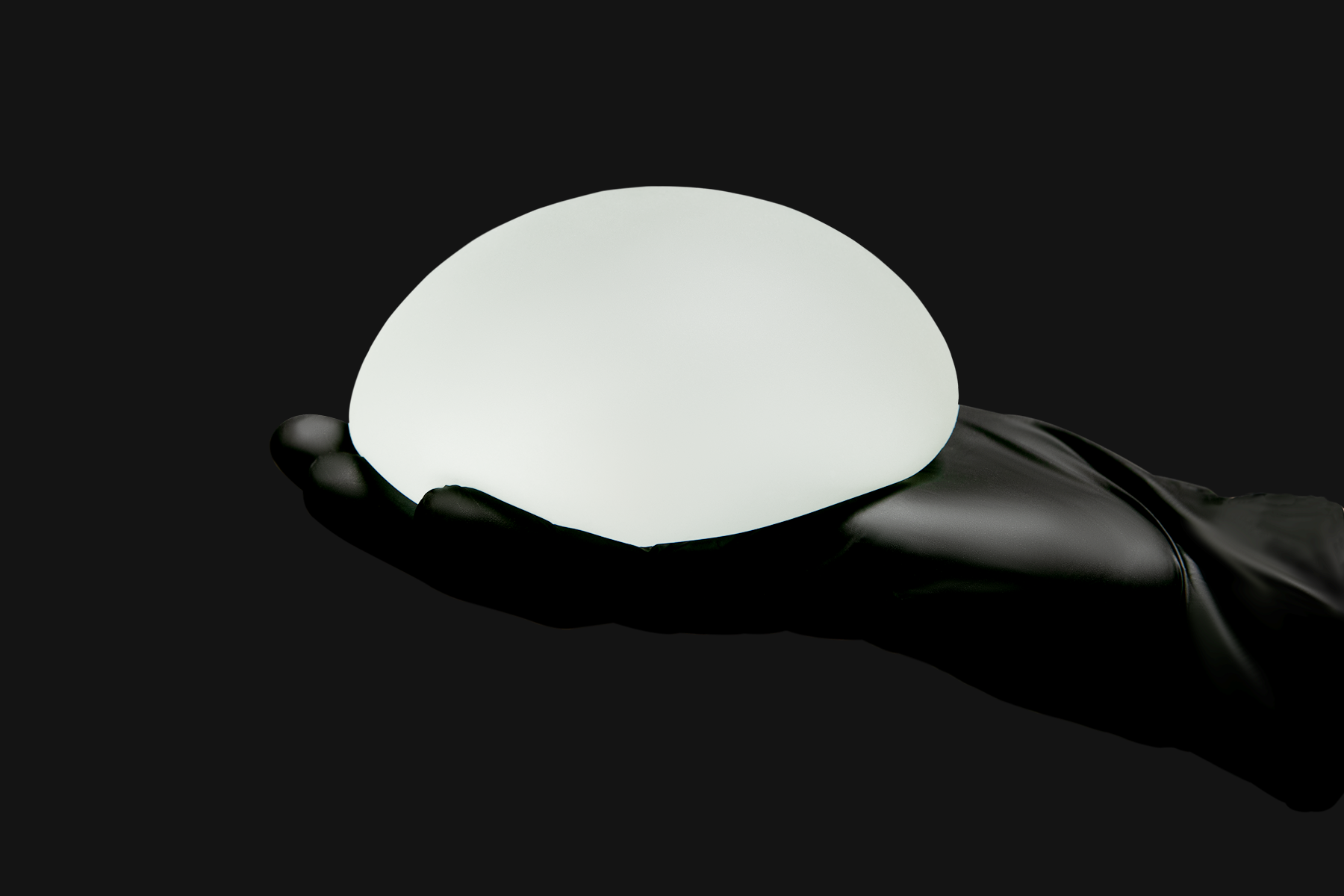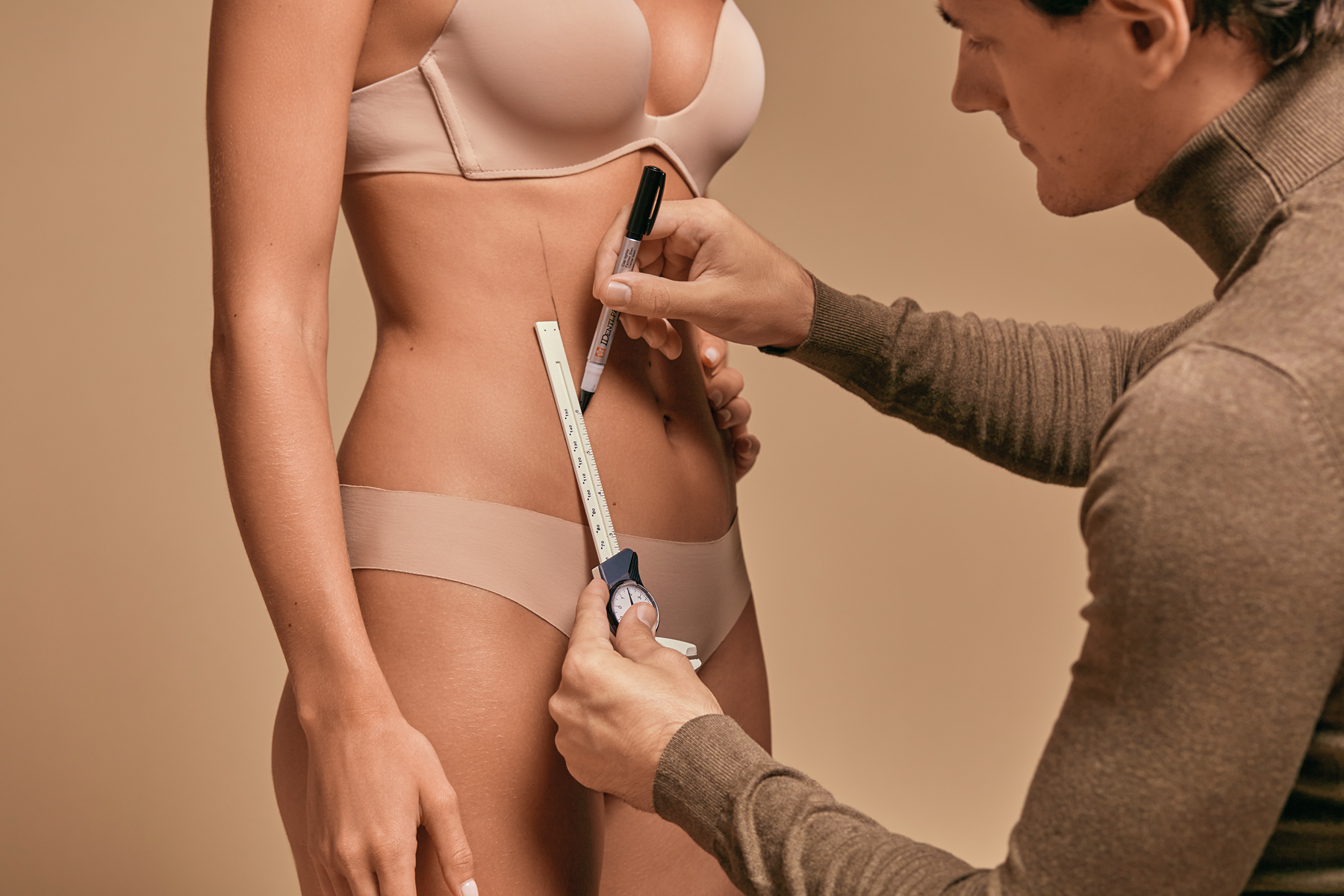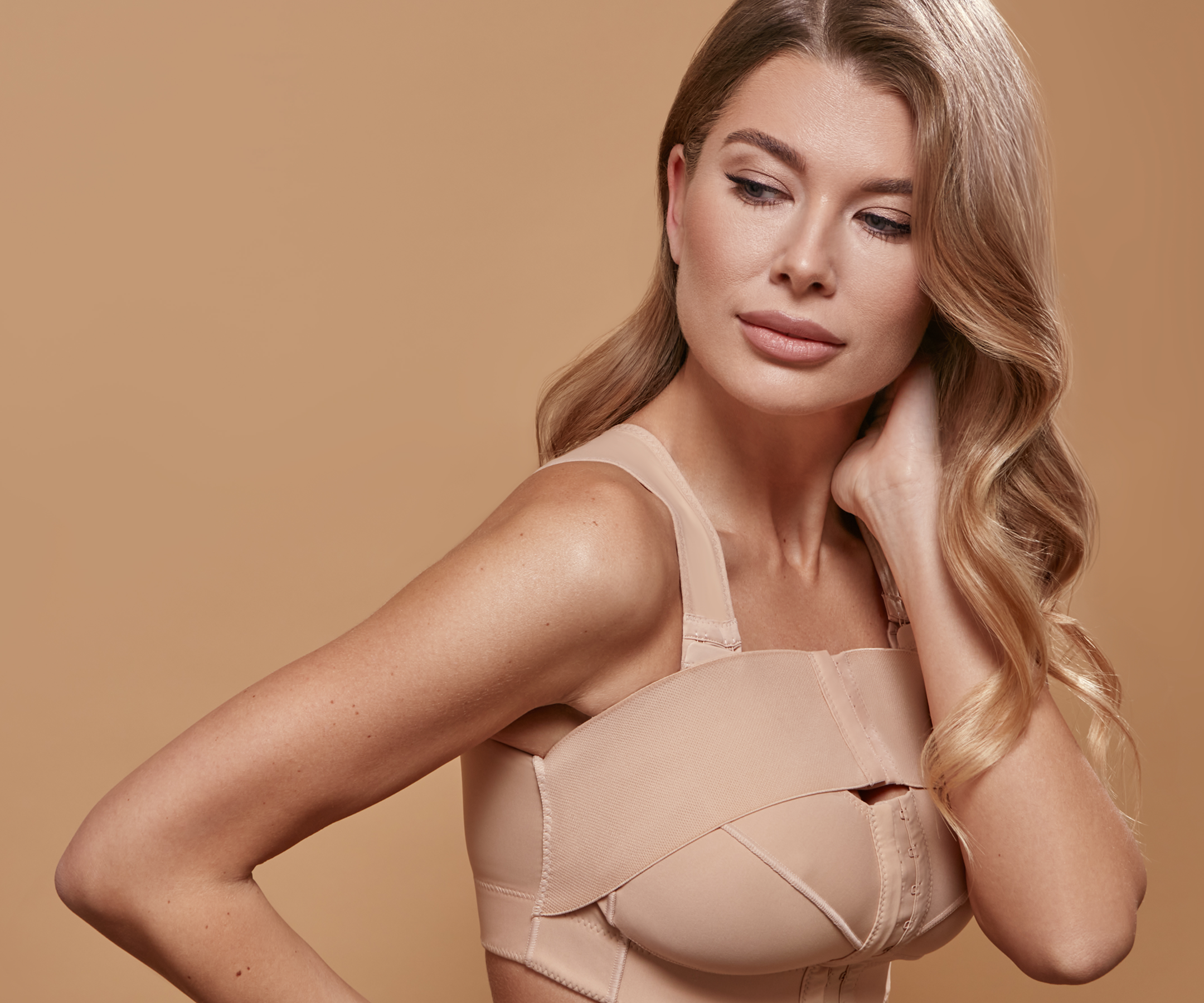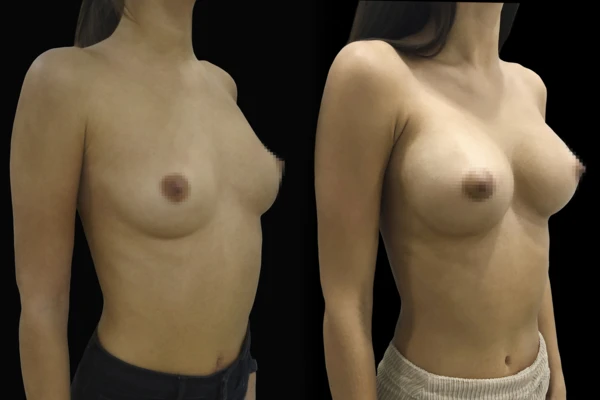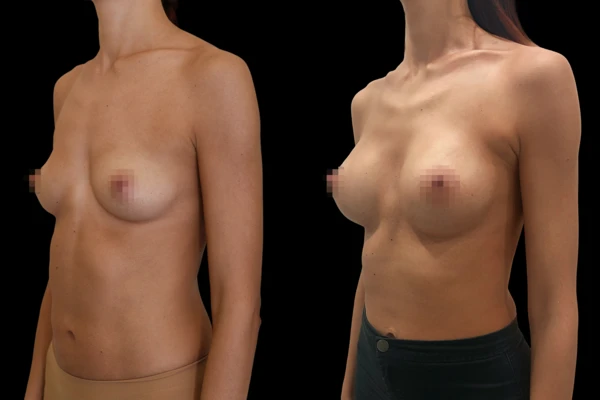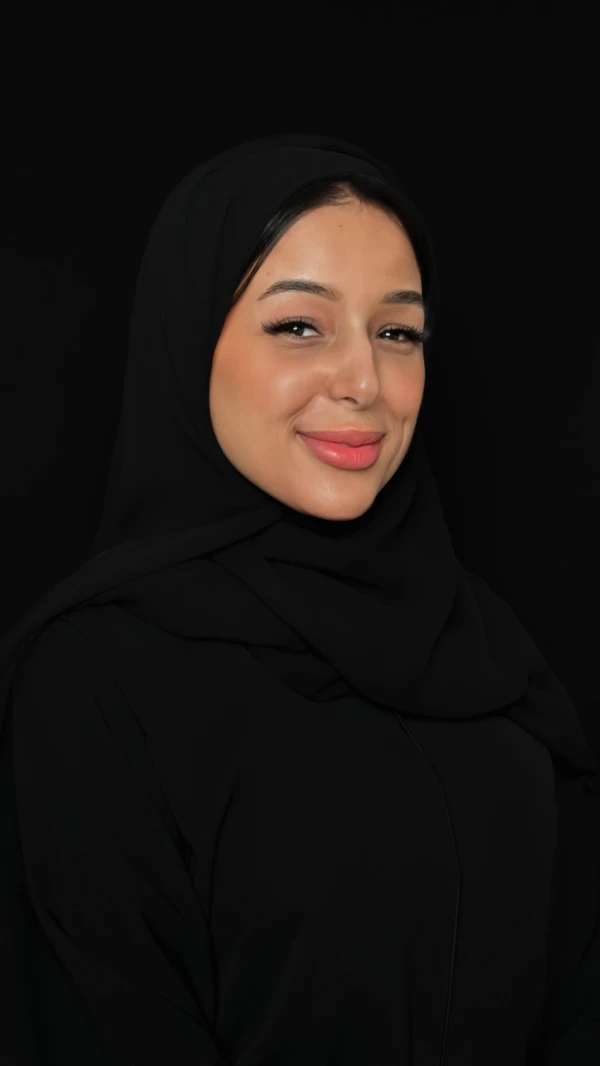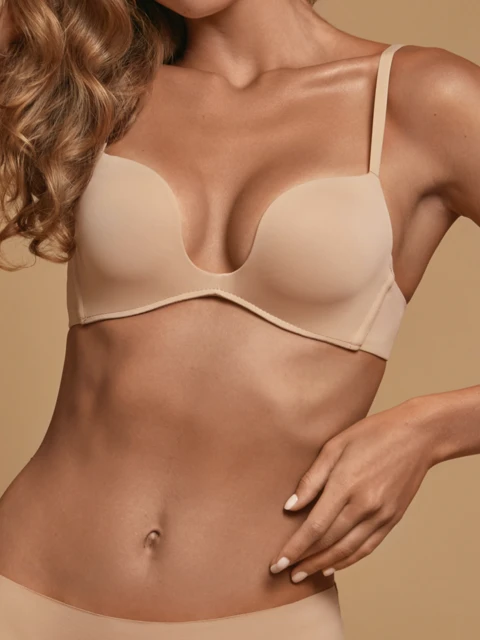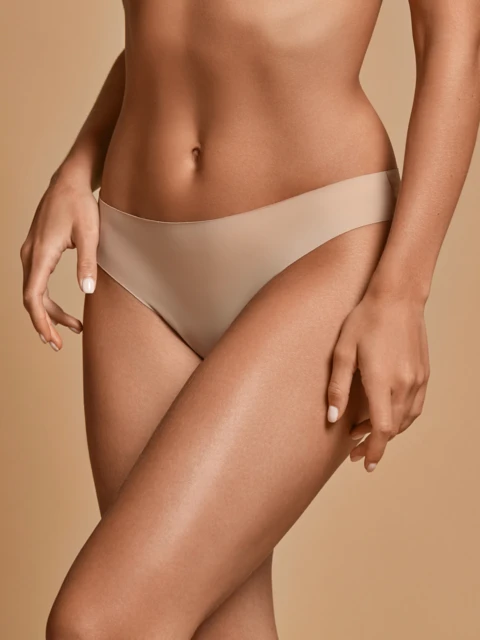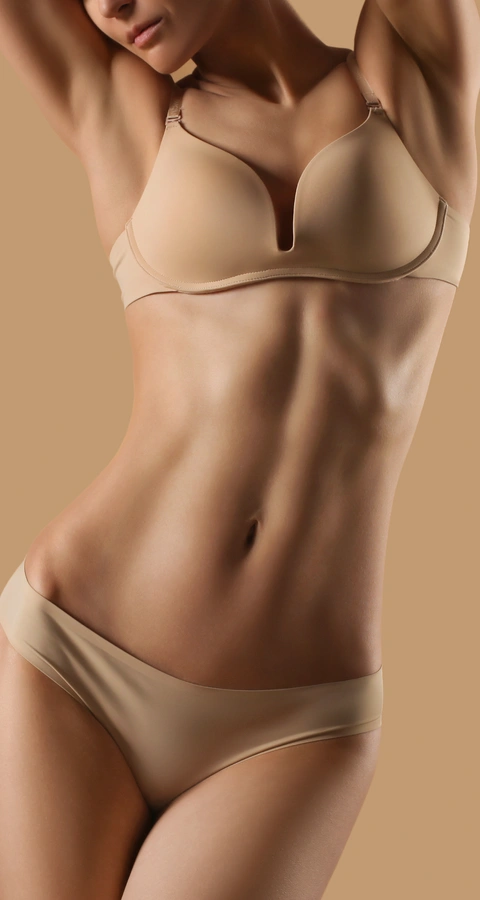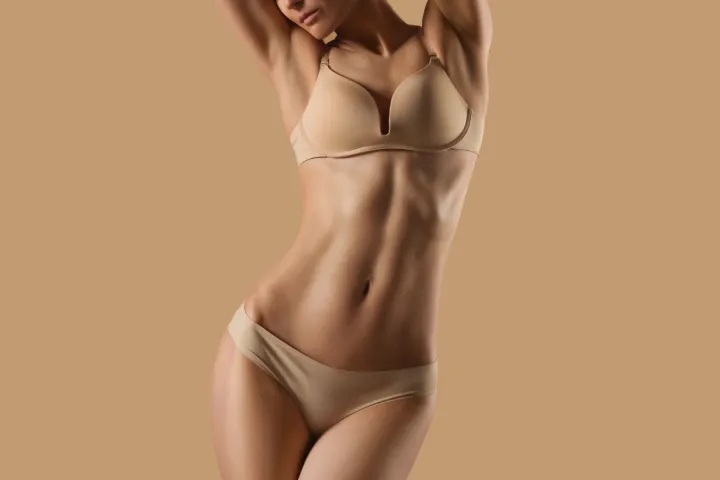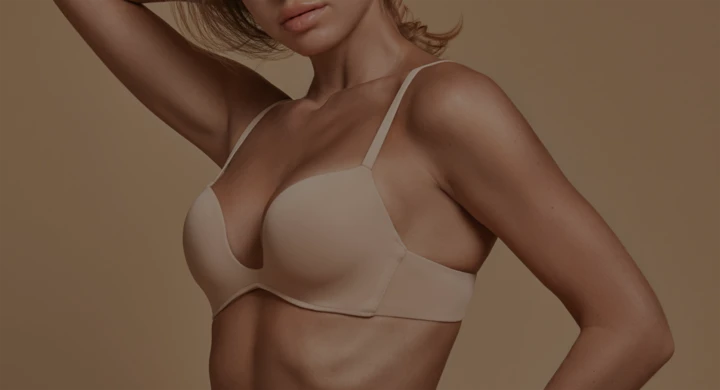
Breast
Augmentation
mammoplasty
The most popular mammoplasty procedure, breast augmentation, enhances the natural beauty of the bust. Dr Grigoriak combines expertise and artistry to deliver results that meet your expectations while maintaining harmony with your body.
Types of Breast Implants

Surface Types
- Smooth Implants: Gentle to the touch but may be less securely attached to body tissues.
- Textured Implants: These adhere more firmly to tissues, reducing the risk of displacement over time.
Shapes of Implants
- Round Implants: Accentuate the décolletage area, offering a more pronounced upper breast volume.
- Drop-Shaped (Anatomical) Implants: Mimic the natural breast shape, creating a fuller lower pole.
The doctor chooses the implant shape based on each patient’s unique features. For instance, an anatomical implant complements a more delicate build and is particularly suitable when the nipple is positioned lower on the breast.
Sizing and Selection
Dr Grigoriak uses moulages (sizers) during consultations, allowing you to see and feel how different volumes will look. Custom implants can also address asymmetry between breasts.
Dr Grigoriak uses high-quality trusted brands such as Mentor, Motiva, Silimed, and Polytech.
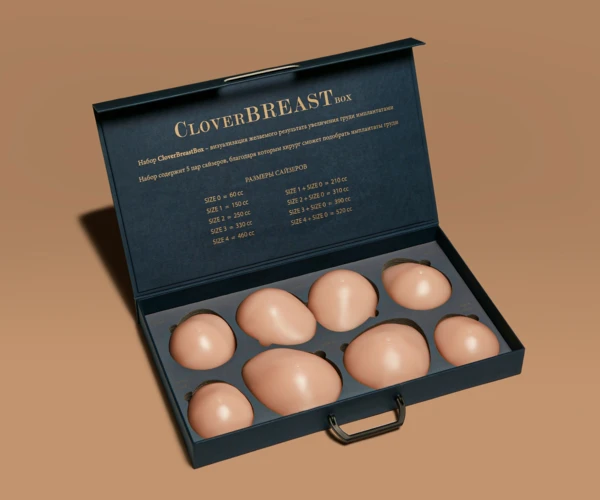
Pocket Placement
The pocket refers to the space where the implant is positioned, and its location determines how the implant is supported and held in place.
The surgeon will carefully evaluate your anatomy and goals to recommend the best placement method. While you might lean toward a less invasive option, the doctor may prioritise techniques that ensure long-lasting results. A detailed discussion during your consultation will guide the decision-making process.
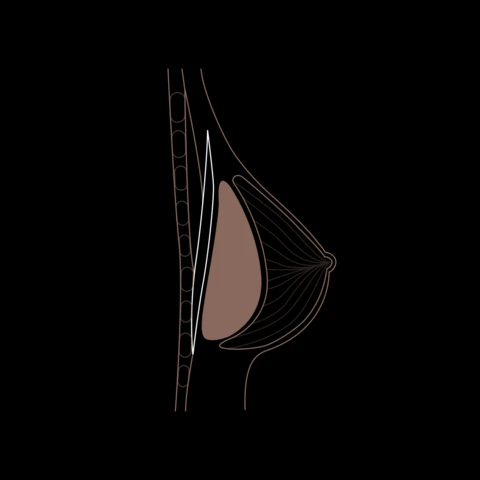
Under the Mammary Gland
In this approach, the breast tissue and skin support the implant. This method is ideal for patients who already have sufficient breast volume and plan to use smaller implants. It is the least invasive procedure and allows for faster recovery, but the implant may gradually shift downward over time.
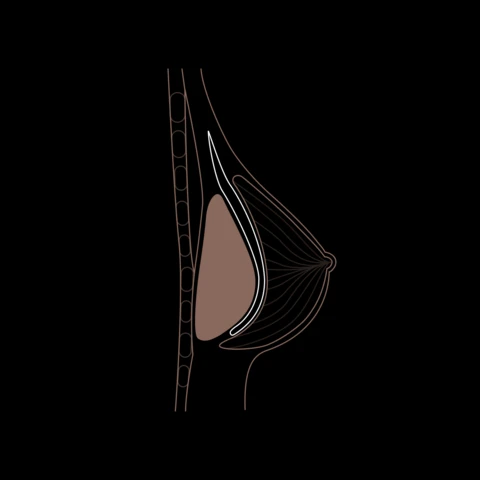
Under the Muscle
This method is particularly suitable for thin patients with a thin layer of fat because the implant is completely covered by the pectoralis major muscle. Only round implants and axillary access are used for this method, which results in a hidden scar. Some minor discomfort may be experienced during the first few weeks.
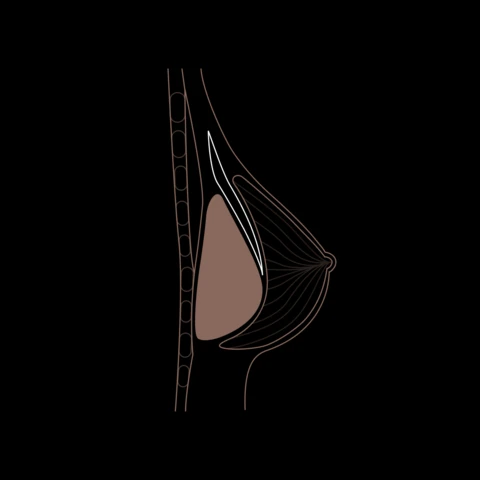
Dual Plane (Partly Under the Muscle, Partly Under the Gland)
This technique combines the benefits of muscle and gland support. The implant is held by he breast tissue at the bottom and secured by the chest muscle at the top. This approach offers long-term stability, reducing the likelihood of sagging over time. Dr Grigoriak typically prefers this method for its durability and natural results.
Accesses and Sutures
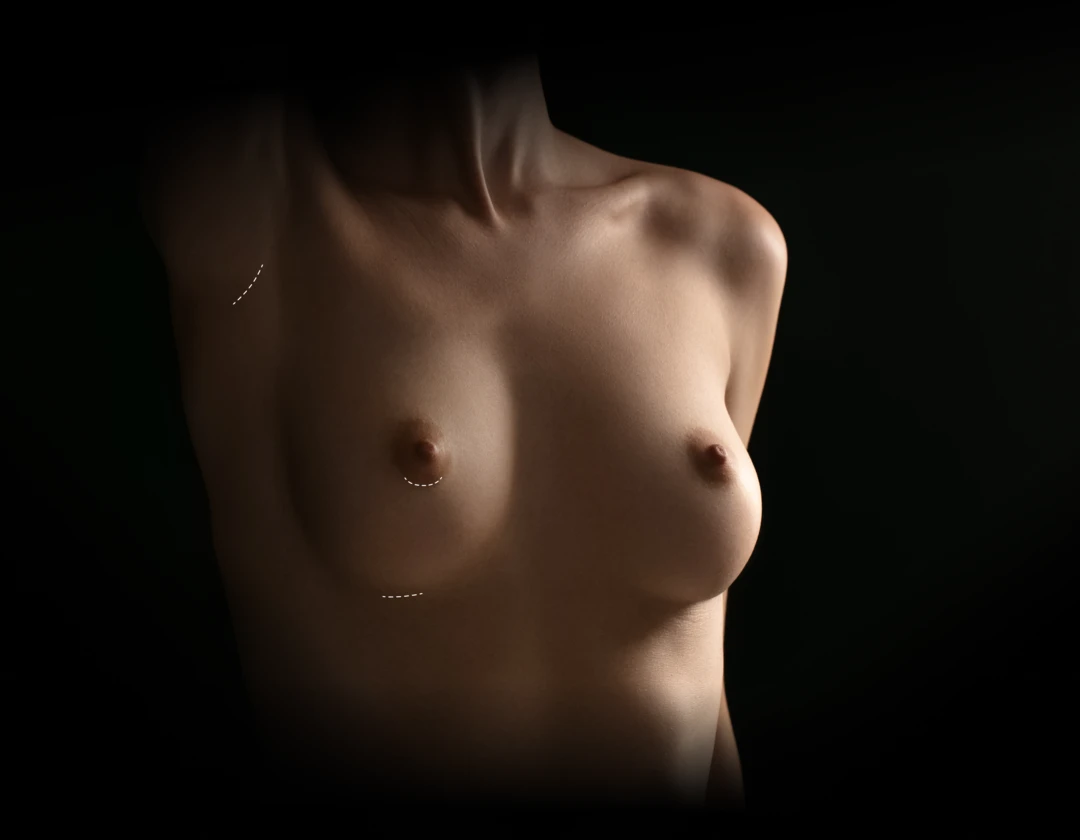
Dr Grigoriak determines the most suitable incision site:
Under the Breast (Sub-Mammary Access)
This is the safest and most commonly used method internationally. The incision, approximately 2-3 cm, is discreetly hidden in the fold beneath the breast. However, it may not be suitable for patients with poorly defined submammary fold.
On the Edge of the Areola (Periareolar Access)
The incision is made along the border between the areola and the surrounding skin, allowing the surgeon to gently separate tissues without affecting the mammary duct. The resulting scar becomes nearly invisible within a month. This method is not ideal for patients with small or narrow areolae.
Under the Arm (Axillary Access)
The incision is concealed in the natural fold under the arm, making it invisible even when arms are raised. However, this approach is more invasive and traumatic and can lead to increased discomfort during recovery. It is unsuitable for patients with significant breast sagging (prolapse).
The surgeon selects the access method best suited to your anatomy and goals. All approaches are designed to preserve the mammary ducts, ensuring that breast augmentation will not interfere with breastfeeding in the future. For fat-based augmentation, a small, inconspicuous puncture under the arm is used instead of an incision, which heals without leaving a trace.

Anaesthesia Anaesthesia
A dedicated anaesthesia team ensures your safety with advanced monitoring equipment. Anaesthesia is administered and regulated throughout the operation, ensuring you are awaken only when directed by the surgeon. More information about anaesthesia can be found in the ‘Questions and Answers’ section.
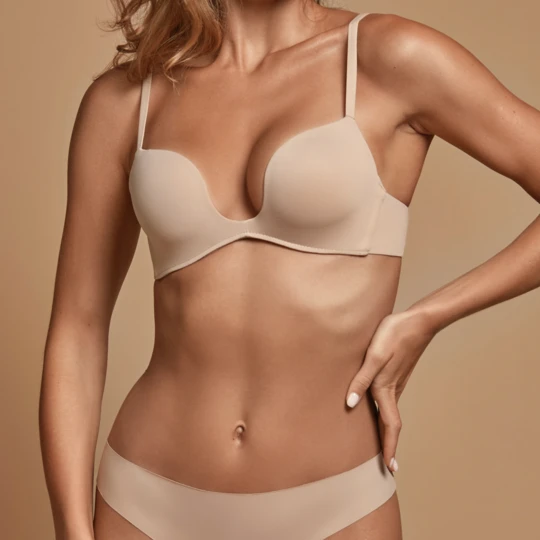
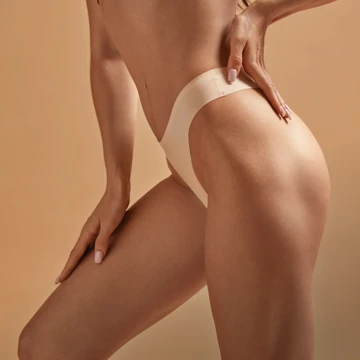
Beautiful and Practical
Two Surgeries in One
Since breast augmentation is a relatively short procedure (40-50 minutes), it is often combined with other surgeries to enhance results and streamline recovery. For example:
- Rhinoplasty, liposculpture, abdominoplasty, and similar procedures.
- Removal of cysts or breast abnormalities (following appropriate examinations).
This approach reduced the need for multiple appointments and recovery periods, allowing you to address multiple concerns simultaneously while saving time and resources.

Take the First
Step Towards
Transformation

